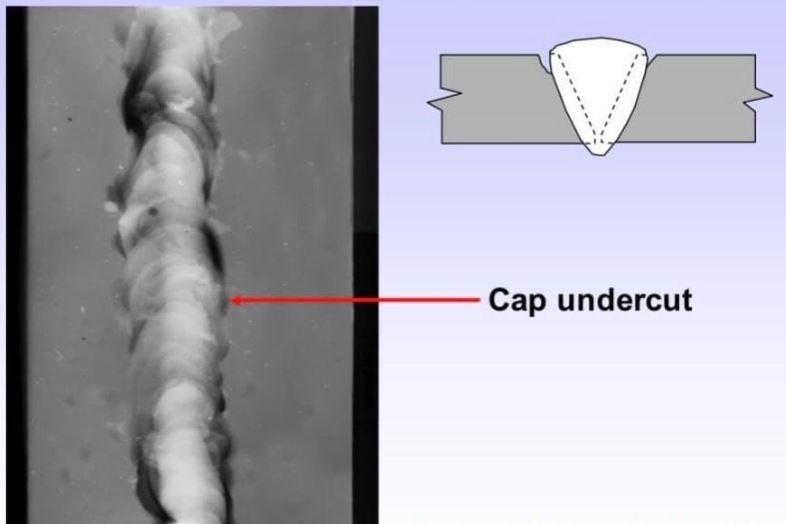Complete Guide to Preventing Weld Undercut: Tips and Techniques
Complete Guide to Preventing Weld Undercut: Tips and Techniques
Blog Article
Understanding the Art of Welding: How to Avoid Undercut Welding Issues for Flawless Construction Results
By recognizing the root causes of undercut welding and implementing reliable techniques to prevent it, welders can boost their craft to new degrees of excellence. In the quest of remarkable fabrication results, mastering the art of welding to stay clear of undercut problems is not just a skill but a need for those making every effort for perfection in their job.
Recognizing Undercut Welding

To avoid undercut welding, welders ought to ensure appropriate welding parameters, such as changing the present, voltage, travel rate, and preserving the right electrode angle. Furthermore, using the proper welding method for the certain joint setup is vital. Employing weaving motions or backstepping techniques can aid make sure appropriate weld steel deposition and decrease the probability of undercut formation. Normal examination of welds during and after the welding procedure is additionally essential to capture any undercut early and make needed modifications to stop more flaws. Preventing weld undercut. By understanding the reasons of undercut welding and implementing preventive measures, welders can achieve top notch, structurally audio welds.
Sources Of Undercut in Welding
Understanding the variables that add to undercut in welding is important for welders to create high-quality, structurally audio welds. Damaging occurs when the weld metal does not properly load the groove developed in between the base metal and the previously transferred weld metal. A number of elements can cause undercut in welding. One typical reason is excessive heat input. Welding at heats for extended periods can lead to the base steel melting greater than preferred, resulting in undercut. Inadequate welding inaccurate or present welding speed can also add to undercut. Not enough current may not give adequate warm to thaw the base and filler steels sufficiently, while excessive speed can avoid proper combination, triggering undercut. Additionally, inappropriate electrode angles or incorrect torch control techniques can create areas of reduced weld steel deposition, promoting undercut. Comprehending these causes and applying proper welding methods can aid avoid undercutting problems, guaranteeing durable and solid welds.
Methods to avoid Undercutting

To minimize the risk of damaging in welding, welders can use strategic welding strategies targeted at improving the quality and integrity of the weld joints. One reliable technique is to change the welding parameters, such as voltage, present, and travel rate, to make certain correct heat input and deposition. Preserving an ideal electrode angle and making certain regular traveling rate can also help prevent undercut. Additionally, utilizing the proper welding strategy for the details joint arrangement, such as weave or stringer grains, can add to reducing damaging. Preventing weld undercut.
Utilizing back-step welding methods and regulating the weld grain account can likewise help disperse warmth equally and minimize the threat of undercut. Routine examination of the weld joint throughout and after welding, as well as carrying out quality assurance steps, can aid in dealing with and spotting damaging problems without delay.
Significance of Proper Welding Specifications
Selecting and maintaining appropriate welding parameters is important for attaining successful welds with very little issues. Welding criteria refer to variables such Recommended Site as voltage, current, take a trip rate, electrode angle, and securing gas flow rate that directly influence the welding procedure. These specifications should be thoroughly readjusted based upon the kind of product being bonded, its density, and the welding strategy used.
Appropriate welding criteria make certain the correct amount of warm is related to melt the base steels and filler product consistently. If the criteria are set too expensive, it can cause too much heat input, triggering burn-through, spatter, or distortion. On the various other hand, if the criteria are as well low, insufficient fusion, absence of penetration, or undercutting might happen.
Quality Assurance in Welding Operations

Final Thought
In verdict, grasping the art of welding calls for a complete understanding of undercut welding, its causes, and strategies to avoid it. By making sure appropriate welding parameters and implementing top quality guarantee methods, you could look here perfect construction results can be achieved. It is important for welders to consistently strive for quality in their welding operations to avoid undercut problems and create premium welds.
Undercut welding, an usual problem in welding processes, happens when the weld metal does not properly fill up the groove and leaves a groove or clinical depression along the welded joint.To prevent undercut welding, welders ought to make sure proper welding specifications, such as adjusting the existing, voltage, traveling rate, and maintaining the right electrode angle. Poor welding current or inaccurate welding rate can additionally contribute to undercut.To reduce the risk of damaging in welding, welders can use strategic welding techniques aimed at boosting the top quality and honesty of the weld joints.In final thought, understanding the art of welding requires a detailed understanding of undercut welding, its reasons, and techniques to avoid it.
Report this page